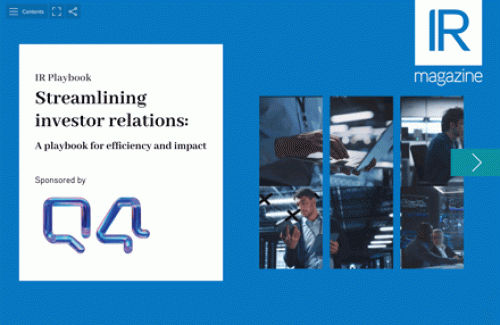Half of IROs who avoid social media to reconsider in light of SEC ruling on investor communications via Facebook, Twitter and others
Seventy-two percent of investor relations officers in the US say they do not currently use social media as part of their jobs, citing a lack of interest on the part of investors, according to a joint survey by NIRI and Corbin Perception Group.
The survey, taken after the SEC announced in April that it would allow companies to use social media to communicate with investors, also reveals that 49 percent of the IROs who don’t use social media will reassess that position in the coming 12 months.
Institutional investors, meanwhile, are overwhelmingly skeptical of information from social media sites, with 92 percent saying the information is only ‘somewhat reliable’ or ‘not at all reliable’, according to the study, which surveyed 87 global buy-side professionals and researched the websites of members of the S&P 500 for their use of social media.
Forty-three percent of institutional investors surveyed say they would use social media more to seek out information after the SEC’s April announcement. But almost half (49 percent) say they won’t use social media more, with the remainder being undecided.
The research also shows that 38 percent of the-buy side professionals surveyed are restricted from using social media at work by company policy, while 52 percent say they use it ‘somewhat in the research process’.
‘Our objective research finds that although [social media] information is of questionable perceived reliability, it can play a role in the investment decision process,’ says Rebecca Corbin, president of Corbin Perception. ‘This underscores the need for IR professionals to closely monitor company-specific social media content.’
Asked to rate information sources on a five-point scale, investors rank internal research the highest, at 4.4 points, followed by contact with management and regulatory filings, both at 4.0. Investor presentations come in at 3.8 and earnings calls score 3.7 points. Print media rate 2.5 and social media sites come in last place, at 1.7 points.
The study also looks at the content of the IR sections of websites of S&P 500 companies, and finds that 73 percent post investor presentations, ‘whether this is a general slide deck, conference or investor day pitch.’ More than half (55 percent) of them post an earnings call presentation and 20 percent post transcripts, which the study authors call ‘a growing best practice given investor interest.’ Only 6 percent have management videos.
When queried about their visits to corporate IR websites, 88 percent of institutional investors say they seek investor presentations, while 68 percent read press releases, 58 percent look for SEC filings and 47 percent watch webcasts. Only 8 percent say they consider company blogs important.
‘When it comes to getting their company story out, one-on-one meetings, the investor presentation, analyst days and conference calls remain the leading sources of reliable information, according to the buy side,’ conclude the study authors.










